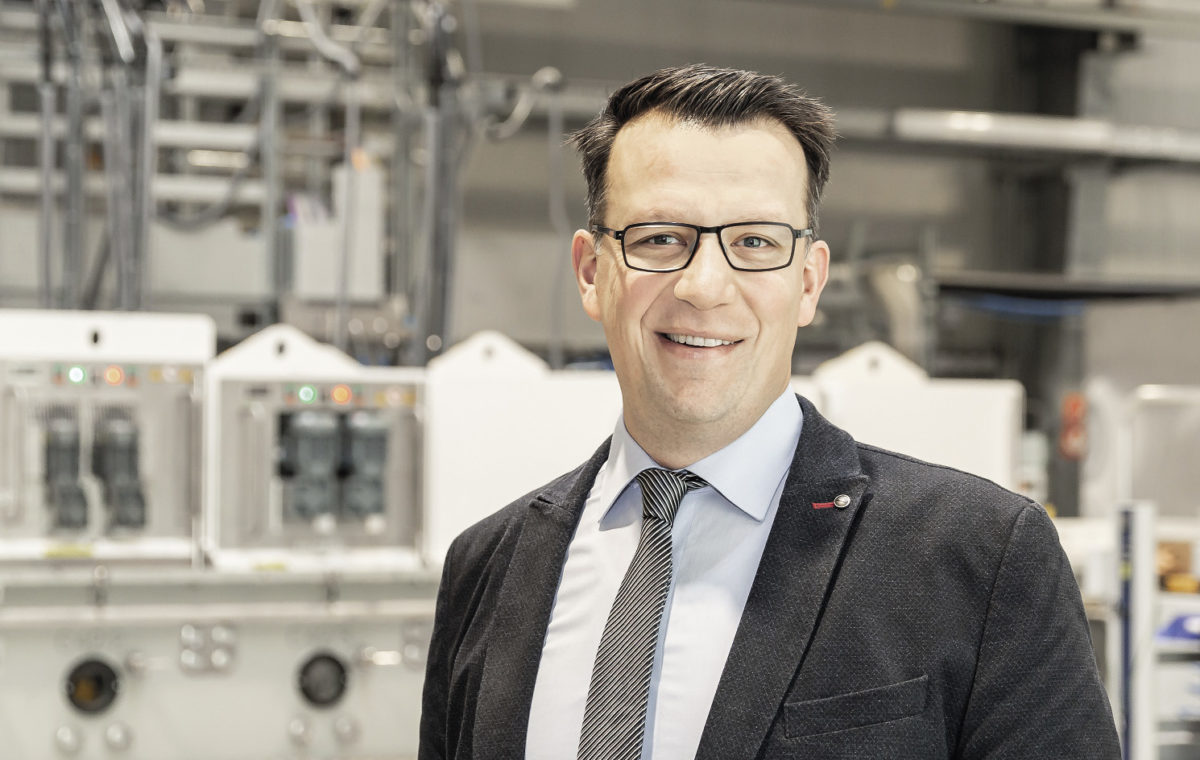What are the opportunities for Von Ardenne in the crystalline silicon (c-Si) segment in 2020 and beyond?
The next-generation solar cell technology, from our point of view, has two options. One option is TOPCon, or passivated contacts, which is the next step after PERC if it matures to superior cost-per-watt performance. The other option is for heterojunction (HJT) technology, and for both we believe Von Ardenne has the right solutions.
I understand you assumed your role heading up Von Ardenne’s activities in c-Si in late 2019 – how does your experience equip you to work with these next-generation cells?
During my Ph.D work I was carrying out research in the field of PV, particularly in production processes. So, I have the perspective of R&D, where I was part of the team at ISFH that achieved PERC solar cell world records at that time, around 2010. Afterwards I went to SolarWorld, where I developed an understanding of the constraints of solar cell producers. After that, running the development departments at the equipment manufacturers Manz and Meyer Burger has enabled me to perceive the potential of German engineering and system manufacturing.
You saw the early days of PERC commercialization and how quickly it went to production. What did you learn?
Part of my work was really looking into the details of the thin-film coating processes and the dielectric properties of these passivation layers, and also for optical benefits in the PERC process flow. PERC, very basically, requires a coating machine and a laser opening machine. And this was behind the success essentially in the end for PERC to make it very simple but to achieve a higher efficiency. This is also the challenge of the next couple of years: We have to surpass the PERC process.
How does the simplicity of PERC apply to next-gen tech like TOPCon or HJT?
The R&D and pilot-line guys in the industry are working hard to prepare and transfer a process which is cost-and-efficiency comparable [with PERC]. We can see that very high efficiencies have been achieved and reported, but to bring this in a process flow that is beneficial from a cost-per-watt point of view is a challenge.
What is the top challenge for TOPCon?
One big challenge when we are talking TOPCon is the coating itself. In TOPCon there is a thin oxide layer, let’s say a barrier layer, and then on top of that you need a polycrystalline doped material. To bring this into a single-sided coating process, so you do not suffer from coating on the other side of the wafer, is a challenge. If you have double-sided coating, at the end you will need an additional process, potentially a wet chemistry process, which makes the whole process flow less attractive and more technologically challenging.
But my impression is that one specific coating solution for the silicon layer is not yet mainstream. Is that right?
It reminds me of the former days of PERC. Nobody knew how to find the right process flow, there were different options to passivate, to open it, and to conduct the metallization, and in the end the industry found a process which is suitable.
What method does Von Ardenne advocate as the best process for the polysilicon layer deposition?
We suggest a sputtering process. To be honest, we are still working on this process. The big advantage of the sputtering tools supplied by Von Ardenne is that we can conduct low damage deposition of these layers. We are depositing the polysilicon material directly on the thin oxide layer. Via sputtering technology, we can apply this damage-free deposition. It is the strong advantage of our technology, and it applies also to HJT. For both you have a very thin layer, in one case an oxide [for TOPCon], and the other amorphous silicon [for HJT], and in both cases you have to be very careful not to damage the layers below it.
Let’s talk HJT – what kind of activity do you see on the market with this technology at present?
There is big activity here on the market. And there are more and more manufacturers evaluating HJT technology right now. We have customers all over the world, not only in Asia, and some frontrunners produce several hundred megawatts of HJT at the moment. Others are doing pilot-stage production, to make module tests and evaluate the right process flow and bring it to hundreds and hundreds of megawatts of production.
As I understand it, you are arguing that Von Ardenne’s magnetrons are well suited to the deposition of the transparent conductive oxide (TCO) layer. Why is that?
The thing is we use very strong magnet bars with at least 15% higher magnetic fields than our competitors. This results in a very low process voltage for minimum damage of the underlying [amorphous silicon] layer. This achieves excellent soft deposition, but also a very high target utilization, along with the other TCO qualities like transparency, conductance, and so on.
But the key is applying our self-developed rotatable magnetron sputtering technology with our very strong magnet bars. From sampling and feedback we have received, the efficiency level we have achieved is at least the same level as other approaches, but productivity of up to 10,000 wafers-per-hour is superior. Also, the XEA|nova platform is suitable to different wafer sizes, so M4 or M6, but also M12.
This content is protected by copyright and may not be reused. If you want to cooperate with us and would like to reuse some of our content, please contact: editors@pv-magazine.com.

